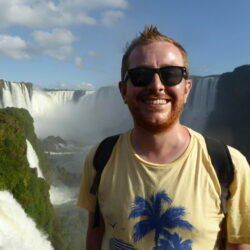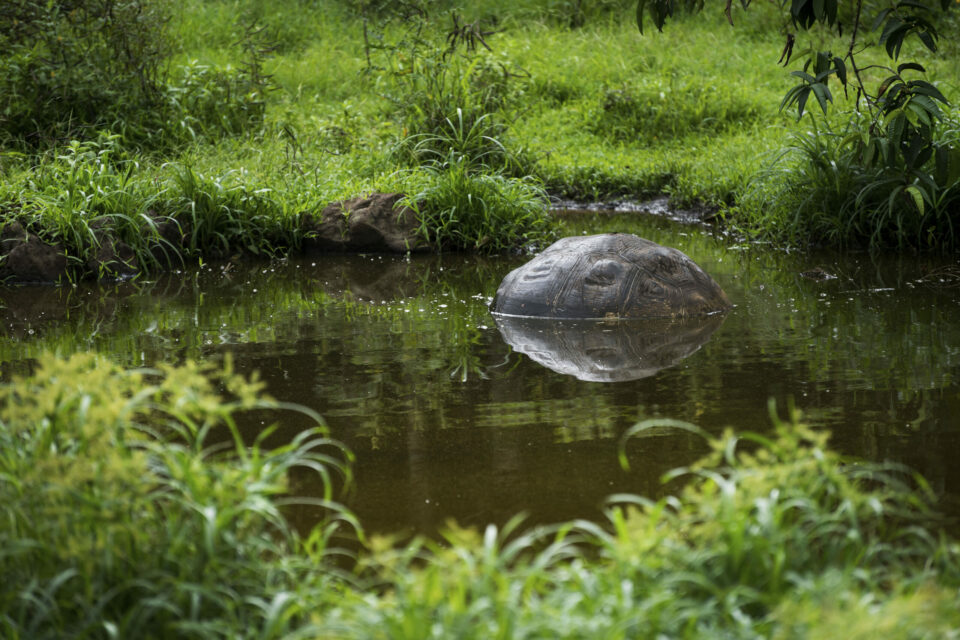

Galapagos giant tortoises: An update from the field
We spoke to Dr Patrick Moldowan, who joined the Galapagos Tortoise Movement Ecology Programme as Principal Investigator earlier this year, about the team’s recent work in the field.
GCT has supported the Charles Darwin Foundation’s Galapagos Tortoise Movement Ecology Programme (GTMEP) for over a decade in their work to improve our understanding of the ecology, health and reproduction of giant tortoises in order to inform future conservation strategies. The major threats to giant tortoise populations in Galapagos, namely invasive species, urbanisation, climate change and land-use change, all stem from anthropogenic causes. Only through an understanding of the ecological needs of the tortoises can landscape planning successfully conserve their numbers.
In our interview with Patrick, we found out a little bit more about the practicalities of tracking and monitoring the behaviour of these iconic reptiles…
Firstly, for those who are unfamiliar with the project, how do you actually track the giant tortoises?
They are giant tortoises after all, but that does not necessarily make them easy to find. The figurative backbone of giant tortoise research in Galapagos involves tracking tortoises to understand their migration and habitat use. Our antenna and receiver work just like those of a car radio, picking up a radio frequency (‘tortoise radio stations’) that is specific to each individual. We can gauge the direction and distance of a tortoise using the ‘ping’ received by our radio receivers. As relevant, we follow the signal of a tortoise to conduct a health check-up or investigate other aspects of their behaviour (What are they eating? Where are they nesting? Are they socialising with others?). Radiotelemetry is used around the world for the study of wildlife. By understanding how these giants use the landscape we can better protect the critical habitat that they need, such as foraging areas, nesting grounds and migratory corridors.
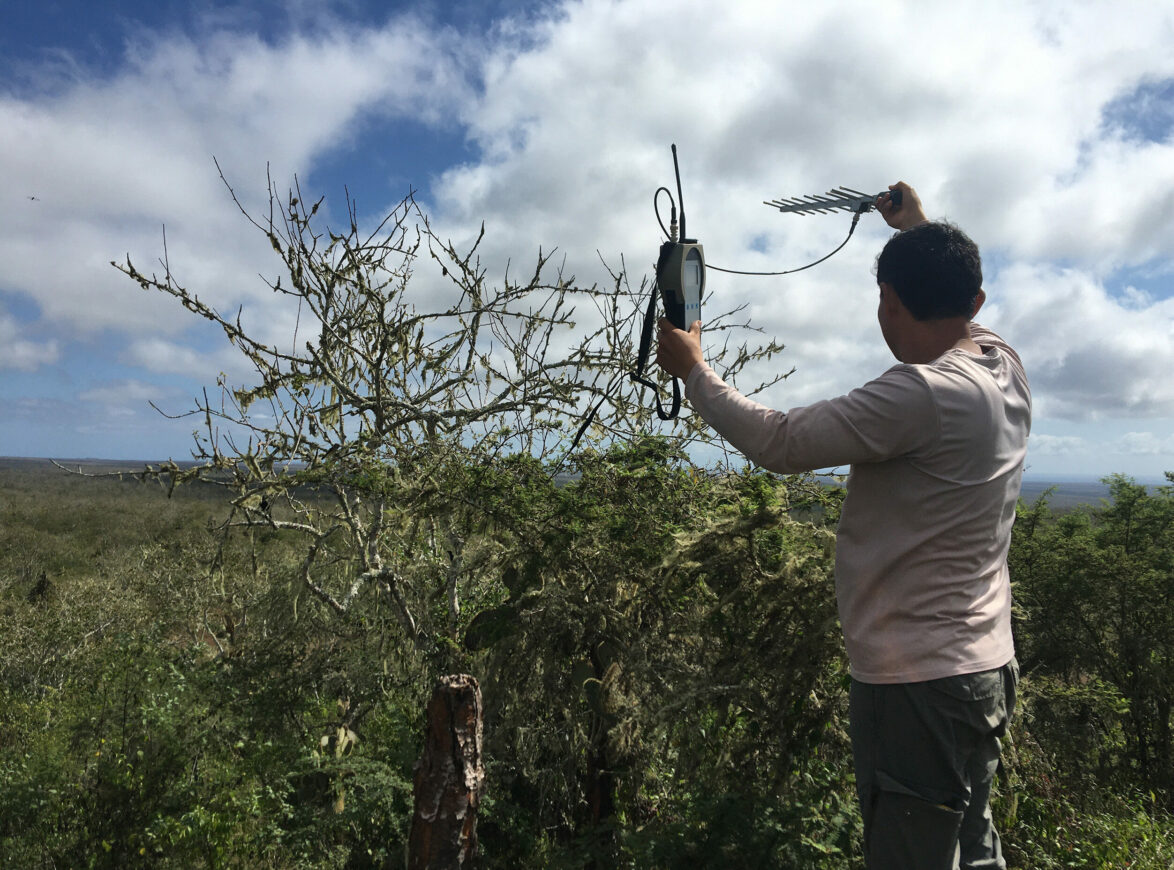
By understanding how these giants use the landscape we can better protect the critical habitat that they need, such as foraging areas, nesting grounds and migratory corridors.
Giant tortoises are big animals – do they really move around that much?
Galapagos giant tortoises are, well, giant (Huge! Enormous! Gigantic! Immense!), but don’t let that bulk fool you into thinking that they are lazy. These tortoises are ‘movers and shakers’ that travel dozens of kilometres and hundreds of metres of elevation between the lowlands and highlands on major annual migrations. Have you ever climbed the side of a volcano? These tortoises do! Considering their long life spans, adult tortoises could conceivably repeat this circuit many, many times in their search for food, mates and nesting areas. The annual migration of giant tortoises is akin to other great migrations around the world, it just happens a little more slowly.
The migration activity of giant tortoises is determined by energetics. It takes a lot of forage to feed these giants, especially the large males, and so when food becomes limited they move to greener pastures. Findings from the GTMEP show that their journey takes approximately two weeks and covers 7–10 kilometres (4–6 miles) or more of linear distance and about 400 metres (440 yards) in elevation gain.
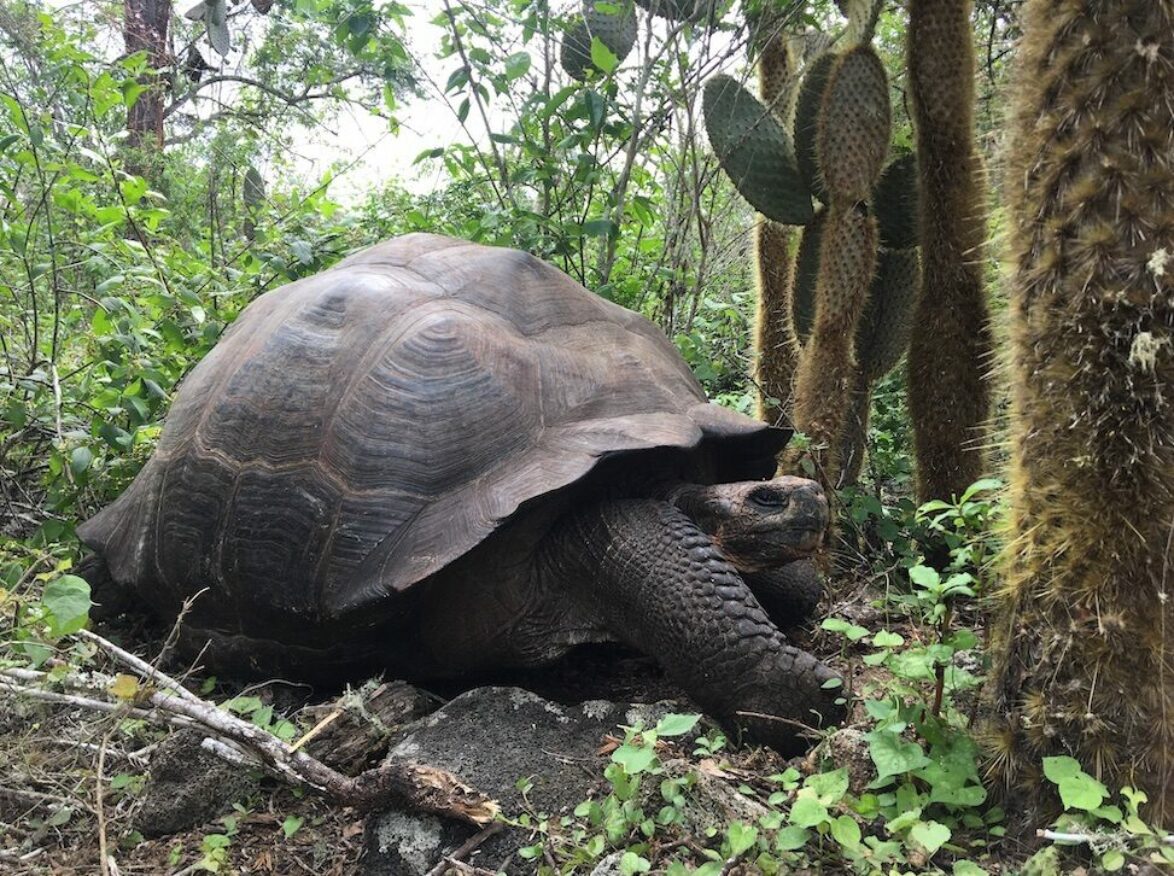
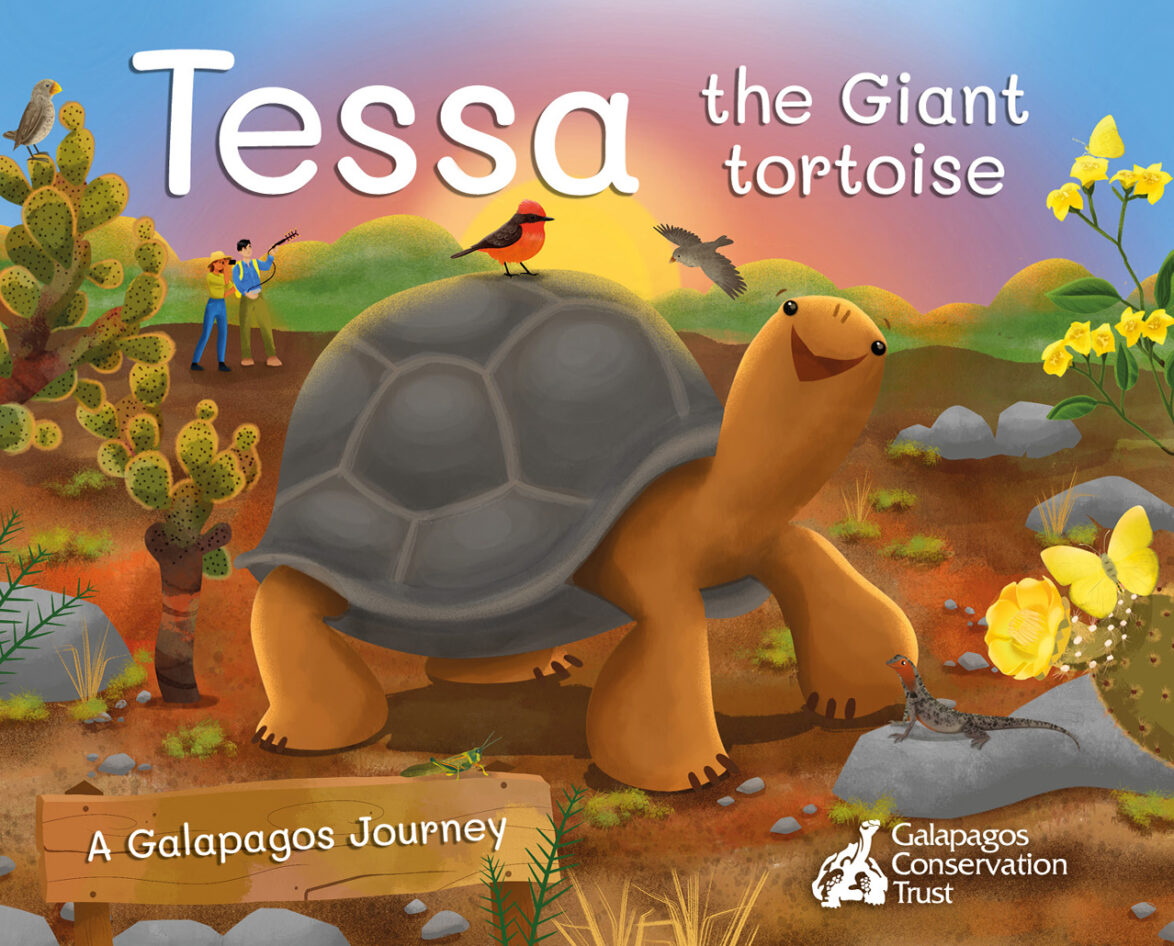
Tessa the Giant Tortoise: A Galapagos Journey is an educational storybook that follows our adventurer, Tessa, on her migration to and from the highlands of Santa Cruz island in Galapagos, as she faces perils such as busy roads and non-native species.
Can you also tell us about the work you’ve been doing to investigate tortoises’ reproductive habits?
The reproductive biology of giant tortoises remains to be explored: How many eggs does a female lay per year? What is the time interval between clutches of eggs? What characteristics does she look for in nesting habitat? What is the hatching success of eggs in the wild? Our team is addressing these questions and more using a combination of technologies, including portable x-ray, radio tracking, GPS tracking and accelerometers (devices that detect and record fine-scale movements).
After using radiotelemetry to locate a tortoise, she is carefully positioned between the portable x-ray machine and a receiving plate that captures the x-ray image. Using a laptop in the field, we can get a real time perspective of the number of eggs that she is preparing to lay. Understanding the reproductive activity of tortoises can inform their health, population biology and conservation.
Our biologists wear protective aprons made of lead to block exposure to radiation. For female tortoises, their infrequent and low dose of radiation is akin to a standard medical check-up.
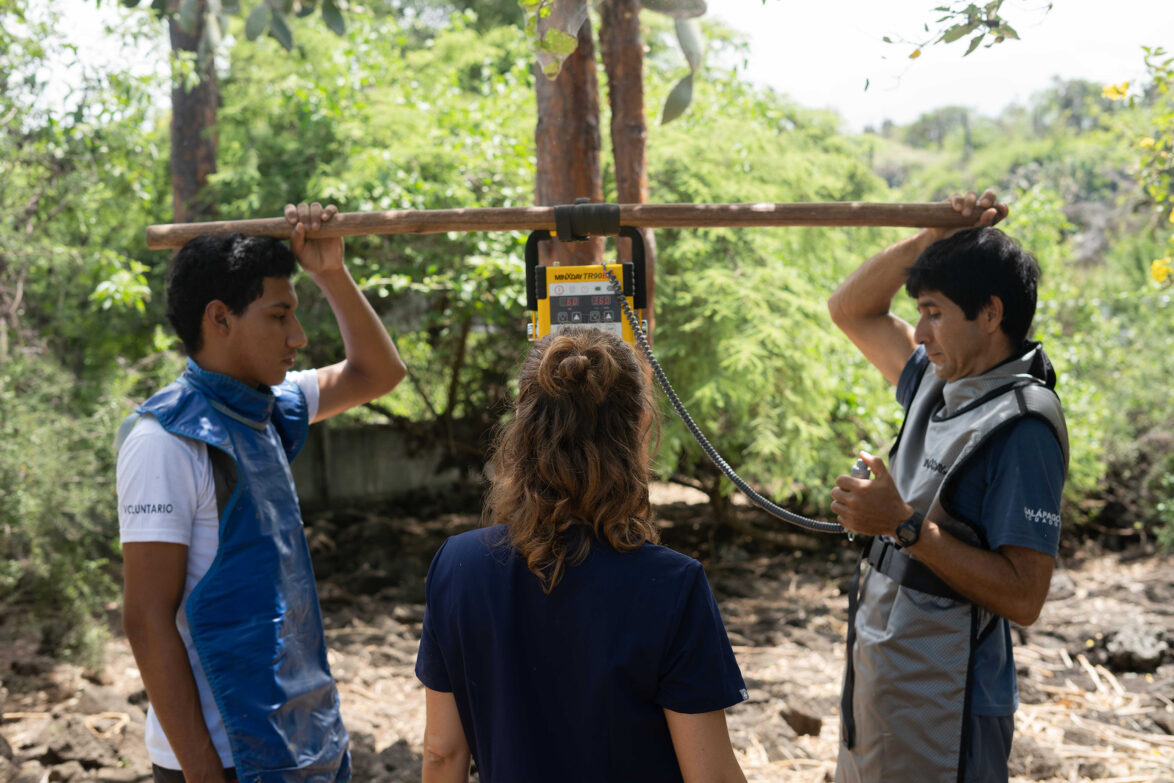
Understanding the reproductive activity of tortoises can inform their health, population biology and conservation.
And how do you track the next stage – when the tortoises actually lay the eggs?
Our field team has been opening nests and implanting dataloggers that measure temperature and movement. Nest excavation is carefully planned to limit disturbance to the nest and the surrounding area. Once the location of the nest is identified, we dig a tunnel to the nest chamber to access eggs. Some eggs are temporarily removed from the nest, marked with a number, weighed, measured and inspected for abnormalities. Labelling eggs ensures that they are replaced in the nest in the same order and orientation in which they were removed. Also, it allows us to track the fate of particular eggs (for example, during the hatching period we will know which eggs did or did not successfully develop). Finally, we add the dataloggers to the nest to provide insight into the environmental conditions of the underground nest chamber, replace eggs that were temporarily removed and seal the nest closed again. Of course, all this is done with the utmost care.
Through this research we will learn about the duration of incubation, natural temperature profiles throughout the incubation period, timing of hatching, hatching success of wild nests, and predict the sex of hatchling tortoises (which is related to temperature!).
Unexpectedly, monitoring the nests of giant tortoises is a bit like gardening: digging in the soil, closely monitoring progress, fussing a little, and really hoping for success! The nests, located in remote field locations, are marked with ‘rock gardens’ and ‘markers’ (often a repurposed tree branch) to aid the park guards and researchers who return on a regular basis to check on the status of nests. On the markers we write the maternal identity of the tortoise (if known), the nesting date and the number of eggs suspected (from x-rays) or known (from temporary nest excavation).

What have you learnt so far from monitoring the nests?
Although we’ve yet to examine the data in detail, females appear to have remarkable site fidelity, returning to very similar locations to nest within years and between years. Females appear to be regularly laying eggs within 2–3 metres (6–10 feet) of previous nest locations. This highlights the importance of conserving intact and high-quality nesting habitat, free from threats like invasive predators, for the female tortoises to return to over their very long lifespans. These observations also raise more questions: Are these giant tortoises like sea turtles in that they return to the same nesting area from which they hatched? Time might tell…

Adopt a giant tortoise
By adopting a Galapagos giant tortoise today you can help to protect this species, their habitats and other Galapagos wildlife. Your adoption could help support the Galapagos Tortoise Movement Ecology Programme, which looks to understand their ecology and migration patterns.
Related articles


The return of the Floreana giant tortoise
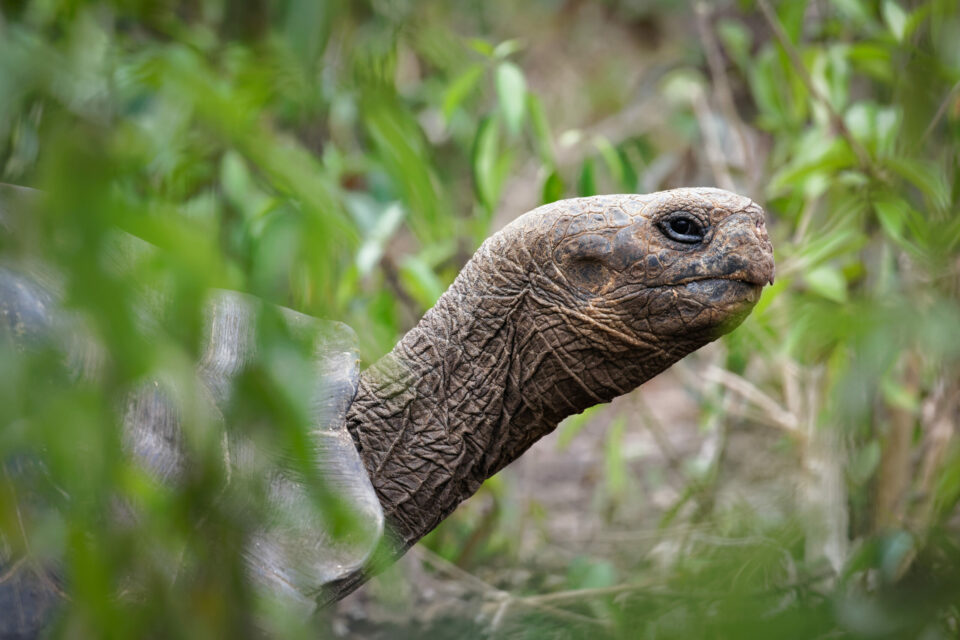
Meet the six Galapagos species you can adopt with GCT

